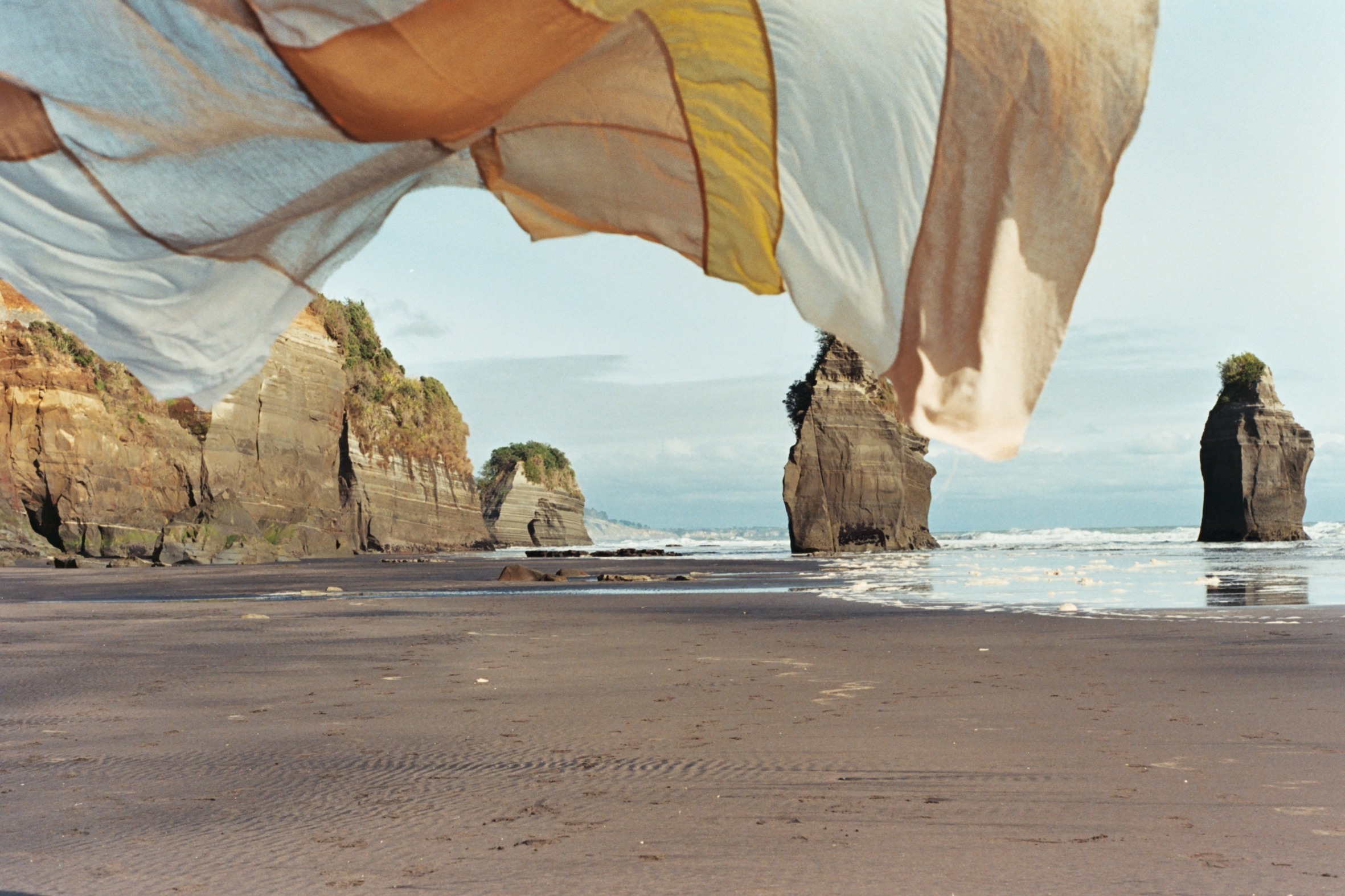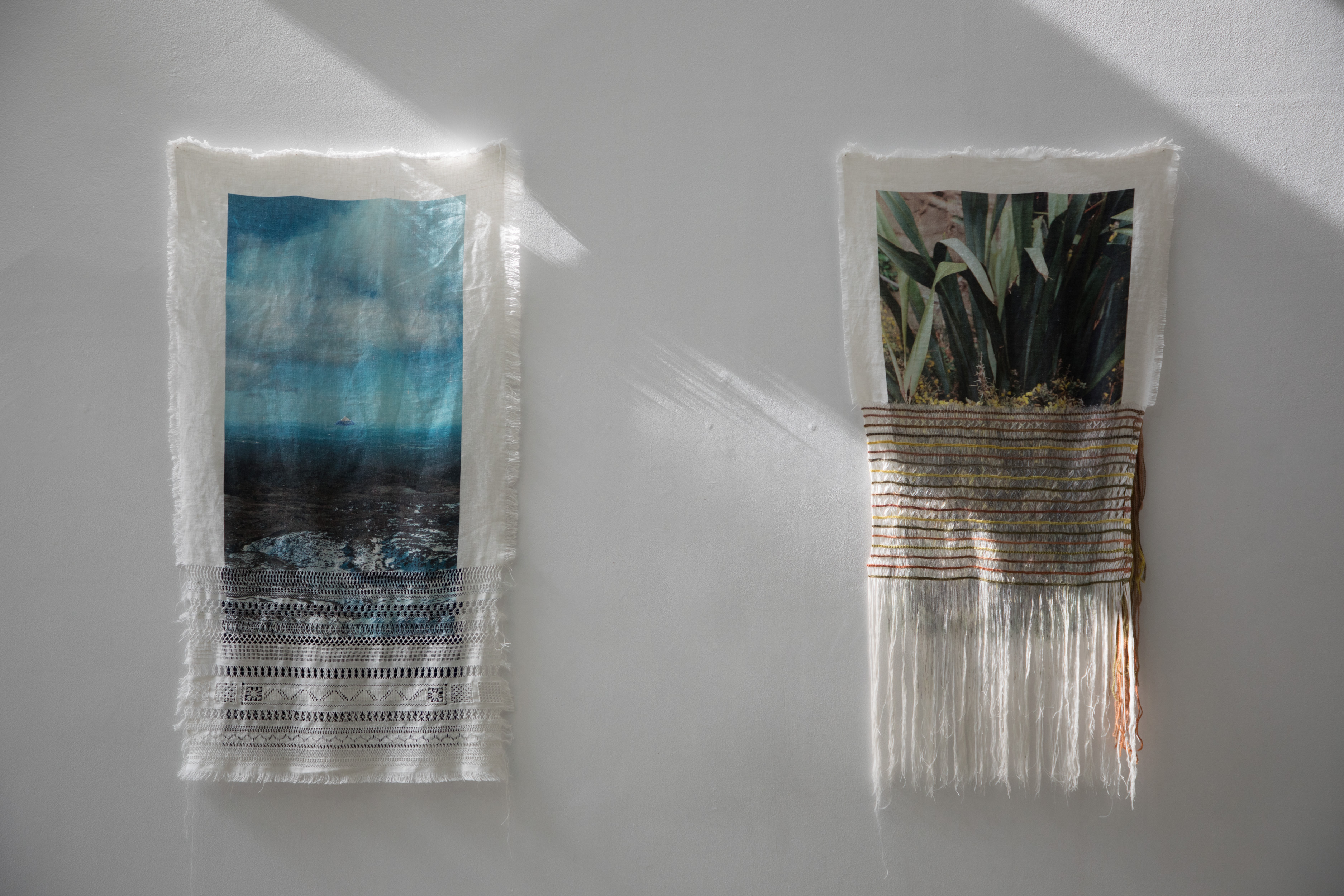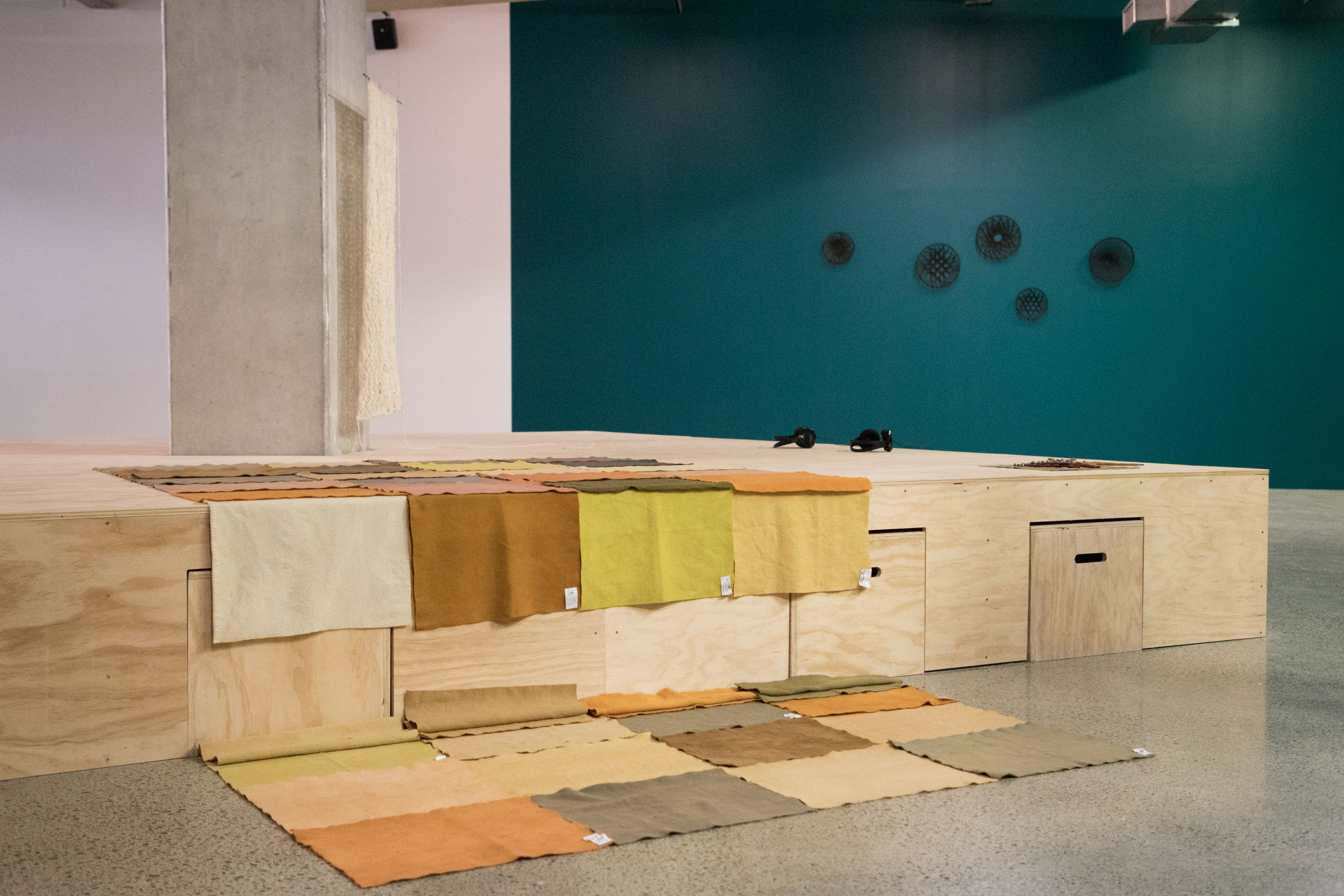
Arielle Walker
On returning to the sea
Stories are intrinsically connected to acts of making with fibre. Customary knowledge is passed down in stories, songs, conversations held over the extraction of muka, the spinning of wool, the weaving of harakeke, the waulking of tweed: narratives woven into the fibre, textiles and text in one. These shared histories of craft and language tie cultural memories and communities together and are irrevocably bound to cultural identity.
Through systematic colonisation, migration, and the industrialisation of making, stories and craft traditions have been altered, shifted, and lost over time. I seek to reconnect with these taonga through On returning to the sea. My art practice is positioned in the spaces that have formed through the interweaving of language and craft, engaging hand-crafted textiles, poetic writing, drawing, lens-based media, being-in-place, and non-linear narrative as methods of making. I reference lines of my tūpuna wāhine – female ancestors – and look towards my ancestral homelands.
Embedded in indigenous methodologies – whakapapa, whatuora, pūrākau – this research explores how cross-disciplinary, process-driven, relational practices might enable new relationships to form with these traditions and homes. By looking to the past, returning to the waters from which we came, we can untangle the threads that bind us to our traditions; and in the act of re-weaving, find new pathways to reciprocal belonging.
Through my MVA thesis On returning to the sea: towards belonging through land, language, & tactile storytelling, I begin making within the relationship between storytelling and traditional crafts, passed down over generations. I reference lines of my tūpuna wāhine and look towards my ancestral homelands – particularly Taranaki (in Aotearoa New Zealand), Scotland, and Ireland.
The first time I learned to whatu with harakeke,
I told the story of Nana’s lace
and my kaiako told me:
i tuku iho, that’s tūpuna guiding your kuia to weave in any way she can.1
The artworks in On returning to the sea come from two particular kaupapa developed through my thesis. More than objects, the work is in the process of making: each piece holds memory and its own mauri.
In lacing/kōtuitui, I combine materials and traditional methods – lacemaking, knitting, and whatu – following in the path of my father’s mother, Nana Maire, my mother’s mother, Grandmama Faith, and my many-greats grandmāmā Te Paea. In rongoā, I piece together whakapapa threads and stories through poem fragments, and fibres dyed with healing plants that bind me to their places of belonging, thinking back to my ancestral homelands. Just as each of these plants holds the ability to heal the body, so working with them through making, in close relation to the places and stories they grow from, can begin to heal the ruptures caused by colonialism-driven dislocation.
In her book Braiding Sweetgrass, Potawatomi botanist Robin Wall Kimmerer recounts that:
Time is not a river running inexorably to the sea, but the sea itself – its tides that appear and disappear,
the fog that rises to become rain in a different river. All things that were will come again.2
If time is the sea itself, then maybe we already hold all the threads we need to find our way. They’re right there with us, beneath the surface. By looking to the past, returning to the waters from which we came, we can untangle those threads; and in the act of re- weaving, find new pathways to reciprocal belonging.
references
1. Excerpt from Arielle Walker, whatu (2019). Poem.
2. Robin Wall Kimmerer, Braiding Sweetgrass (Canada: Milkweed Editions, 2013), 206
images & artworks pictured
Ngā mihi aroha ki a Emily Parr for the documentation of these works:
first soft light of the rising sun (2020). Foraged plant dyes on handed- down silk, cotton muslin, and linen; Grandmama’s threads. 1820 x 4700mm.
distance measured by a mountain’s grief/distance covered, stitch by tiny stitch (2019- ongoing). Hīkoi; 35mm film; dye-sublimated print onto hemp; embroidery, drawn-thread/cutwork in hemp thread, velvet embroidery fabric prepared by Nana. 600 x 1000mm
distance rewoven from the roots to the stem (2020–ongoing). Hīkoi; 35mm film; dye-sublimated print onto hemp; whatu in plant- dyed wool yarn. 600 x 1000mm.
embodying my roots, skin, and leaves: a map (2020–ongoing). Foraged plant dyes on vintage and handed-down woollen blanket. Currently 2000 x 3720mm.
if I knit enough lace into blankets we can keep warm for generations to come (2019- present) Wool hand-spun in conversation between my sibling-not-in-law Siobhan and myself, knitted into an ongoing blanket in the Shetland lace pattern Print o da Wave.
rongoā (2020) Audio (spoken poem fragments, the ocean at Tongaporutu, Taranaki springwater, tones from Granddad's tuning fork); headphones. 8 mins 22 seconds (loop)
thirty-one hand-turned wooden lace-bobbins in various hardwoods, gifted to me by Nana and made by my uncle; beads made from river clay, ochre, and black sand, gathered from Tongaporutu, Taranaki; beads made from seaweed and pumice, gathered from Oakura, Taranaki; beads made from muka and Taranaki river stones; Hawaiian faux-pearl beads from Grandmama’s necklaces (2004–ongoing). Hand-made and passed down beads; wooden lace-bobbins; repurposed electrical wire. Dimensions variable. Placed on Nana's embroidery sampler.
(Some of these artworks are presented in/on VĀWĀ (2020), an exhibition space created by Sapati Mossiah Avei Fina’i with the Speaking Surfaces project team at ST PAUL Street Gallery. Assorted basket-works by Ruth Castle are visible in the background, also as part of concurrent exhibition Speaking Surfaces)




